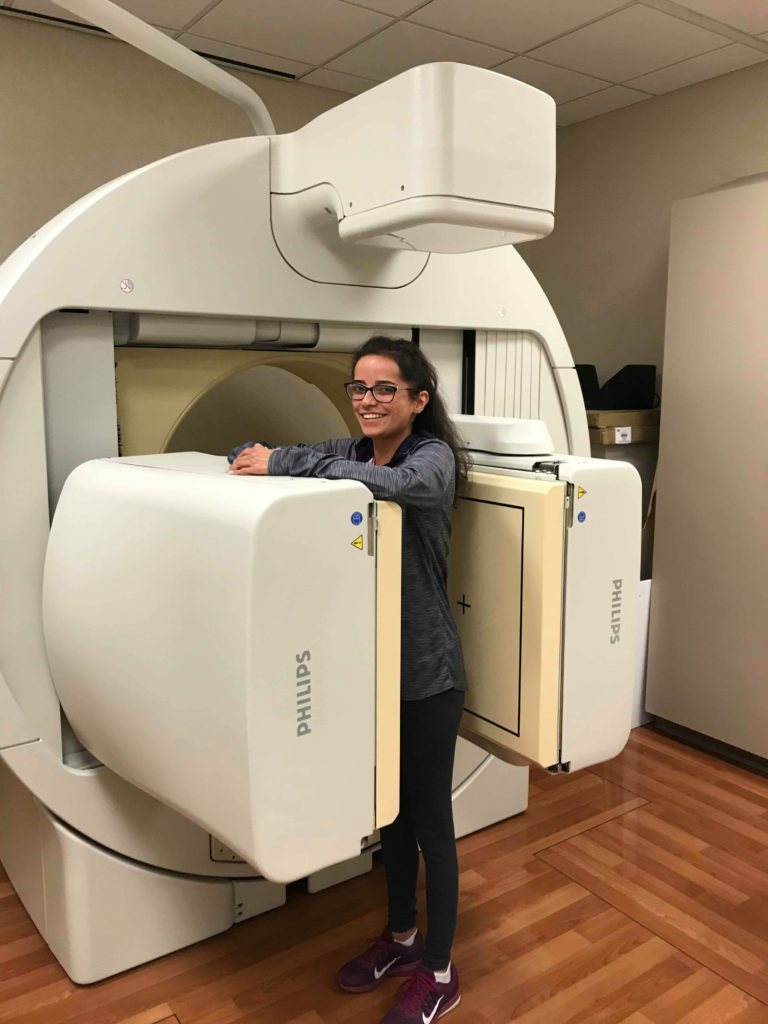
Currently, there are no evidenced-based guidelines for surveillance. Therefore, the type of surveillance and the recommended intervals for imaging for people with Vascular Ehlers-Danlos Syndrome (VEDS) vary from no imaging to imaging every 18 months.
When imaging is conducted and abnormalities are identified, monitoring is important to determine if treatment is appropriate. Doctors may recommend an annual physical examination. People with known artery problems may need an evaluation by ultrasound or computerized tomography angiography (CTA) or magnetic resonance angiography (MRA) at specified intervals.
What are the types of imaging commonly used in Vascular Ehlers-Danlos Syndrome?
CT (or CAT)
CT (or CAT) stands for computed tomography. A CT uses a combination of X-rays and a computer to create images of the body. This involves radiation. For individuals with VEDS, this can be useful for diagnosing multiple things, including a bowel perforation. During the scan, the patient lays on a bed that slowly moves through a donut-shaped scanner while the X-ray tube rotates around the patient. The machine is shaped like a donut with a short tunnel in the middle with a bed.
The scan takes only a short period of time, varying from a few seconds to several minutes. A CT is not useful for seeing the arteries; instead, an adaptation of CT is used called CTA.
CTA
CTA stands for computed tomography angiography. A combination of CT scanning and an injection of contrast material (dye) is used in this kind of scan to detect aneurysms, dissections, or other problems with the blood vessels. The contrast material illuminates the arteries during the scan, so the radiologist can see them. A CTA typically takes only a few minutes, and does involve exposure to radiation.
The dye commonly causes a warm or flushed feeling, a metallic taste in the mouth, and a need to urinate, but the effect of the dye is short-lasting and goes away quickly.
MRI
MRI stands for Magnetic Resonance Imaging. MRIs use magnetic fields, radio waves, and a computer to see different parts of the body. The MRI machines are shaped like a large cylinder, with a bed or table inside for the patient. Sometimes, a contrast material or dye is used. An MRI typically takes much longer than an X-ray or CT/CTA at about an hour, but does not expose the patient to radiation.
MRI is performed to examine several parts of the body, but is not as useful for examining the blood vessels. Instead, to examine the blood vessels with magnetic resonance, an MRA will be used.
MRA
MRA stands for Magnetic Resonance Angiogram, or Magnetic Resonance Angiography. MRA uses magnetic fields, radio waves, and a computer to display the blood vessels and help reveal problems related to the blood vessels, like aneurysms and dissections. MRAs, like MRIs, do not use any radiation. A contrast material, (or dye) may be used during this type of exam, which will light up the blood vessels and allow the radiologist to see them.
Ultrasound
Ultrasound imaging is a type of imaging that is safe and requires very little preparation. It uses sound waves to show the radiologist images of the inside of the body, and can be useful for imaging blood vessels in lieu of an MRA or CTA in some cases. In order to see the blood vessels in the abdomen with an ultrasound, typically the patient will need to fast so that gas bubbles do not block the view of the arteries. Sometimes, ultrasound is used for regular follow-up of patients with VEDS, as they are noninvasive and do not use radiation.
Echocardiogram
An echocardiogram is a type of ultrasound that uses sound waves to show the radiologist images of the heart and blood vessels of the heart. It can be used to identify heart disease and other problems involving heart function and vascular concerns.
Types of imaging to use with caution for individuals with Vascular Ehlers-Danlos Syndrome
Catheter Arteriography
Conventional arteriography involves the use of a catheter, x-ray imaging, and contrast material injection to produce detailed pictures of the blood vessels. A catheter is inserted into an artery and then guided to the area that needs to be examined. This type of arteriography should generally be avoided for individuals with VEDS unless absolutely necessary, due to the risk of arterial ruptures and dissections associated with the invasive procedure. These should be performed with great caution and only to identify life-threatening sources of bleed prior to facilitating treatment.
Endoscopy
Endoscopy produces images of the digestive tract by using a flexible tube with a light and camera called an endoscope. The endoscope is guided down the throat and through the digestive tract, and the procedure typically involves sedation. Endoscopies are discouraged and should be used in individuals with VEDS only to identify life-threatening sources of bleeding prior to facilitating treatment and only if other non-invasive forms of imaging cannot be used.
Colonoscopy
Colonoscopy is used to detect problems in the colon or rectum. During the procedure, a flexible tube with a camera called a colonoscope is inserted into the rectum and guided through the colon. Colonoscopies are routinely performed in the general population for cancer screening, however, in individuals with VEDS routine colonoscopy in the absence of concerning symptoms or a strong family history of colorectal cancers is strongly discouraged due to the risk of bowel rupture during the procedure.
Need to find a doctor knowledgeable in VEDS?





